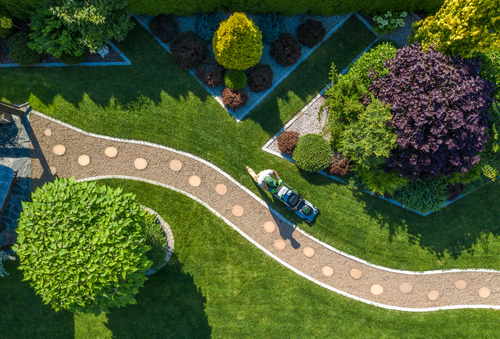Back to Basics is a weekly feature that highlights important but possibly overlooked information that any EHS professional should know. This week, we examine the hazards that landscapers face and how to deal with them safely.
Landscapers are exposed to all kinds of different hazards on a daily basis, ranging from heat and weather hazards, chemical exposures, accidents with machinery or tools, construction dangers, and the physical stress of lifting and other awkward postures. OSHA provides a full list of potential hazards that landscapers face and the possible solutions that can help workers reduce and avoid these hazards altogether.
Hazards
OSHA states that landscapers are in danger of facing the following hazards in their industry:
- Cuts and amputations
- Electrical hazards
- Ergonomics
- Heat and cold stress
- Lifting and awkward postures
- Motor vehicles
- Noise
- Pesticides and chemicals
- Slips, trips, and falls
Landscapers also frequently engage in specific activities that can cause more hazards, including soil preparation and grading, irrigation, hardscape construction, planting, lawns and maintenance, and tree care.
Soil preparation and grading
OSHA defines soil preparation as the process of preparing the existing soil material by loosening the sub-grade and mixing in soil conditioners such as topsoil, humus, and fertilizer to a quality needed for planting and landscaping. It defines grading as the process of moving soil to the desired elevations or the designed contours.
The common hazards that occur during these processes include equipment accidents, slips and trips, vehicle accidents, cuts and amputations, and hearing loss. Employers should combat these hazards by training and certifying operators and drivers. They should also make sure their workers wear ear protection and boots with traction soles, and stay clear of tiller blades.
Irrigation and hardscape construction
Irrigation is the process of installing and maintaining irrigation lines, says OSHA. Landscapers can be exposed to hazardous materials and excavation trenches during this process, along with glue and primer hazards, amputation, and electrocution. Employers should make sure their workers wear protective gloves, stay clear of trencher blades, and that the equipment is inspected.
Hardscape construction can include the building of retaining walls, hard surface patios, decks and walkways, water features, and wood construction. The biggest hazards include cuts and amputations, hearing loss, lifting-related injuries, slips and trips, and the hazards that come with trenching and excavation. Managers must ensure that equipment safeguards are functional and in place, utilize protective systems, and provide the proper PPE and training, including ear protection and saw training.
Planting and tree care
Planting involves installing trees, shrubs, and lawns, tree staking, work area housekeeping, and providing safe crew transportation. According to OSHA, the biggest concerns during planting are lifting-related injuries, heat stress, cuts and hand injuries, vehicle accidents, and slips, trips, and falls. Employers must train and certify drivers and make sure that equipment is inspected before use. Landscapers should keep the jobsite clean, drink plenty of water and take rest breaks, and get help for lifting.
Tree care companies provide specific services such as pruning, chipping and removal, plant health care, cabling, bracing, transplanting, consulting, fertilization, and lightning protection. OSHA says that exposure to overhead power lines, falling branches and tools, and faulty safety equipment can all lead to potential fatalities. Tree care workers are likely to face cuts and amputations, eye and ear damage, electrocution, and getting struck by objects. Management should have their employees wear safety goggles, hard hats, chaps, and ear protection, and comply with the 10-foot power line clearance rule.
Lawn and landscape maintenance
Lastly, a large part of a landscaper’s job is maintenance, which includes mowing, pruning, fertilizing, clean-up, blowing, and safely traveling from one job site to the next. During these activities, workers are at risk of cuts and amputations, hand and eye injuries, chemical exposures, hearing loss, ergonomics, and vehicle accidents.
Employers need to train drivers to avoid accidents and implement an effective hazard communication program that includes employee training. They should have their workers wear gloves, protective goggles while using blowers, ear protection while using power equipment, and maintain comfortable mower settings. Workers need to use safe-lifting techniques as well.
For the full list of hazards and OSHA recommendations for landscaping safety, click here.

